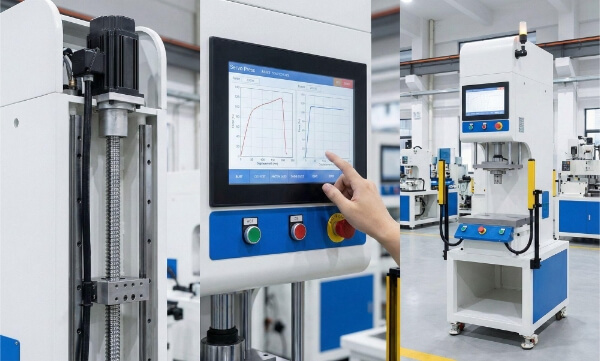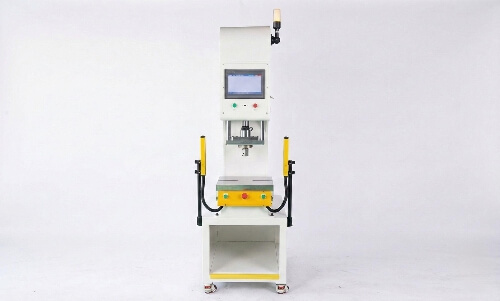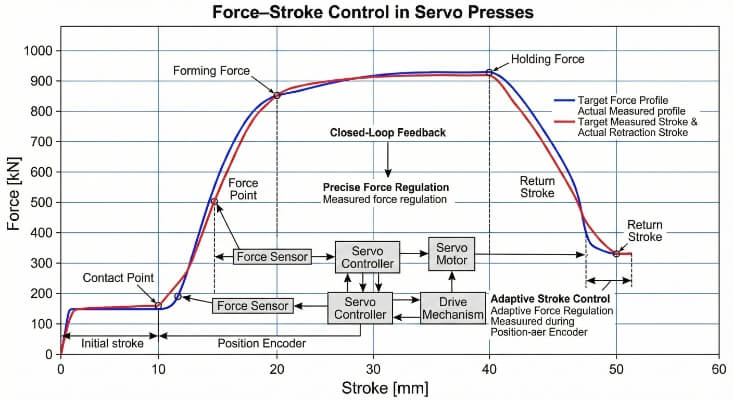La estampación de acero para muelles ofrece solidez, flexibilidad y una buena resistencia a la fatiga, razón por la que se utiliza en productos como clips de automoción y fijaciones industriales. Sin embargo, no siempre es fácil trabajar con él. Para conseguir una calidad constante, debe comprender cada paso del proceso y saber cómo solucionar los problemas sin perder tiempo ni material.
El campo de la estampación de acero para muelles cambia rápidamente. Esta guía explica los principales procesos, los retos habituales y las nuevas ideas que influyen en las piezas para muelles modernas. Si sigue leyendo, tendrá una visión más clara de cómo encaja todo.
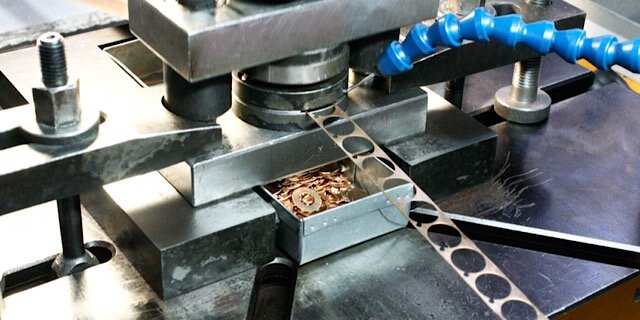
¿Qué es la estampación de acero para muelles?
El estampado de acero para muelles es un proceso que utiliza una prensa y un juego de troqueles adaptados para cortar y dar forma a finas láminas o tiras de acero para muelles. El troquel aplica una presión y un movimiento controlados para dar forma al material. Este proceso puede realizar varias operaciones, como corte, perforación, doblado, acuñado, estampado y embutición. Para mayor rapidez y calidad constante, los fabricantes suelen alimentar el material a partir de bobinas.
Los ingenieros seleccionan las calidades de acero para muelles en función de los requisitos de resistencia y recuperación elástica. Las opciones más comunes son los aceros con alto contenido en carbono, como el 1075 o el 1095, y los aceros inoxidables para muelles, como el 301. Algunas piezas requieren tratamiento térmico y revenido tras el conformado, mientras que otras utilizan material pretemplado para reducir los pasos de producción.
El proceso básico sigue una secuencia precisa. Elegir la calidad y el grosor adecuados. Dejar en blanco el contorno de la pieza. Formar y acuñar las características necesarias. Eliminar rebabas y aliviar tensiones. Aplicar un acabado, como la pasivación o el chapado. Por último, inspeccione las piezas para asegurarse de que cumplen las especificaciones.
Propiedades y tipos de acero para muelles
Los aceros para muelles deben doblarse sin romperse y recuperar su forma en todo momento. A continuación, desglosaremos las características que lo hacen posible y destacaremos las calidades más utilizadas en estampación.
Características principales del acero para muelles
- El acero para muelles tiene un alto límite elástico, por lo que recupera su forma original tras la carga.
- Ofrece una larga vida a la fatiga, lo que permite que las piezas soporten muchos ciclos sin agrietarse.
- El material muestra springback después del conformado, por lo que el utillaje debe permitir el retorno elástico.
- Tratamiento térmico aumenta la resistencia y fija el temple. El fleje pretemplado puede omitir este paso.
- La conformabilidad cambia con el contenido de carbono y el temple. Los templados más blandos se doblan más fácilmente con menos riesgo de agrietamiento.
Calidades y aleaciones habituales en estampación
- SAE 1074 / 1075 (alto contenido en carbono): Buena combinación de resistencia y conformabilidad. Común en clips, abrazaderas y muelles planos.
- SAE 1095 (Alto contenido en carbono): Resistencia y dureza muy elevadas con una excelente resistencia a la rotura. Puede agrietarse si los radios de curvatura son demasiado cerrados.
- SAE 1050-1065 (alto contenido en carbono): Gama de carbono moderado para un conformado más fácil que el 1095, manteniendo al mismo tiempo buenas cualidades elásticas.
- Acero inoxidable 301 (de 1/4 duro a totalmente duro): Resistente a la corrosión y se endurece durante el conformado. Adecuado para clips, contactos y cierres.
- 17-7PH inoxidable: Tipo endurecido por precipitación con alta resistencia tras el envejecimiento. Mantiene la resistencia a temperaturas más altas; común en piezas aeroespaciales y de precisión.
- Acero inoxidable 410 / 420 (martensítico): Endurecible y magnético, con mejor resistencia al desgaste que el 301. Menor resistencia a la corrosión en comparación con los grados austeníticos.
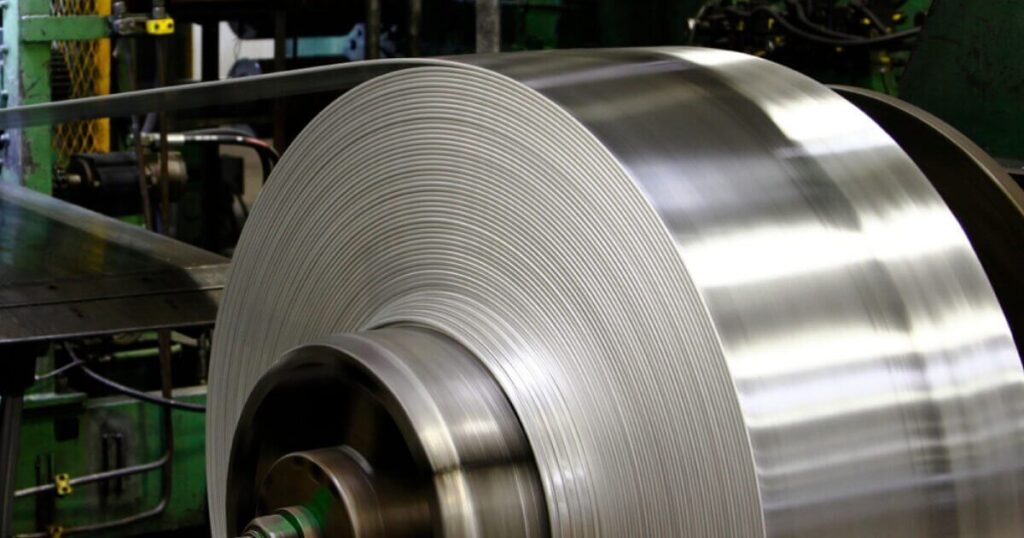
El proceso de estampación del acero para muelles
La estampación de acero para muelles sigue un camino claro desde la bobina bruta hasta la pieza acabada. A continuación, explicamos cómo se prepara el material, los pasos básicos del proceso y los principales tipos de estampado utilizados para piezas de muelles.
Preparación de la materia prima para el estampado
El proceso comienza con la selección de la calidad y el grosor del acero para muelles. El material suele presentarse en bobinas o tiras planas. Debe cumplir las especificaciones de dureza, tolerancia de espesor y estado de la superficie.
A continuación, se desenrolla la bobina y se aplana si es necesario. Esto elimina cualquier curva o combadura que pueda afectar a la precisión. Algunos talleres limpian o lubrican la banda para reducir el desgaste de la herramienta y mejorar el acabado de la pieza.
Flujo de trabajo de estampación paso a paso
- Alimentar el material: La bobina se introduce en la prensa mediante un enderezador y un alimentador. Esto garantiza un movimiento y una posición estables.
- Blanqueo o perforación: La prensa recorta formas de piezas o agujeros con gran fuerza. Los bordes limpios y sin rebabas son importantes aquí.
- formando: El metal se dobla o se moldea utilizando punzones y matrices adaptados. El springback debe tenerse en cuenta en el diseño de la matriz.
- Formación secundaria: Los doblados o acuñados adicionales pueden seguir en la misma carrera de la prensa o en una segunda estación.
- Desbarbado y limpieza: Se eliminan los bordes afilados. Las piezas suelen limpiarse para su inspección o acabado.
- Tratamiento térmico: Si la pieza se formó blanda, se endurece y templa para fijar sus propiedades elásticas.
Tipos de técnicas de estampación
- Estampación progresiva: El más común para piezas de muelles. Una tira se mueve a través de una matriz con muchas estaciones. Cada estación añade un paso -cortar, doblar, conformar- hasta que cae la pieza final.
- Estampación compuesta: Realiza múltiples operaciones en una estación. Útil para piezas planas con características en un plano.
- Estampación por transferencia: Desplaza la pieza de una estación a otra con dedos mecánicos. Permite formas complejas y embuticiones profundas.
- Corte fino: Produce bordes muy lisos y precisos. Ideal para piezas con tolerancias estrechas o superficies visibles.
Desafíos comunes en el estampado de acero para muelles
El acero para muelles es fuerte y flexible, pero su estampación plantea problemas específicos. A continuación, analizamos dos áreas problemáticas principales: la vida útil de las herramientas y los defectos de las piezas durante el conformado.
Desgaste y mantenimiento de herramientas
El acero para muelles es más complejo que la mayoría de las chapas. Esto significa un mayor desgaste de los punzones y matrices, y que los bordes afilados se desafilan más rápidamente. Los recubrimientos como el TiN o los insertos de carburo pueden ayudar, pero las herramientas siguen necesitando revisiones frecuentes.
Si las herramientas se desgastan de forma desigual, las piezas se salen de las especificaciones. Los cortes se vuelven ásperos y las curvas pierden precisión. La fuerza de prensado aumenta. Esto sobrecarga la prensa y acorta su vida útil. Los talleres deben programar el mantenimiento de las herramientas con frecuencia y controlar su vida útil en función del número de piezas.
La lubricación también afecta al desgaste. Sin suficiente lubricación, la fricción se acumula rápidamente, provocando el gripado o el desgarro de los bordes. Sin embargo, un exceso de lubricante provoca manchas o problemas de limpieza. Conseguir el equilibrio adecuado es importante.
Grietas, arrugas y defectos
Las grietas se forman cuando el metal no puede estirarse o doblarse lo suficiente. Esto ocurre en esquinas afiladas, radios estrechos o cuando la pieza se adelgaza demasiado. Para solucionarlo, los ingenieros pueden ablandar el acero antes de moldearlo o aumentar los radios de curvatura.
La arruga se produce cuando la compresión obliga al metal a plegarse. Ocurre en embuticiones profundas o pestañas anchas. El apoyo en la matriz o una mejor presión del portapiezas ayudan a evitarlo.
Otros defectos son las rebabas en los bordes, las marcas superficiales o los cortes incompletos. Suelen deberse a herramientas desafiladas, una holgura incorrecta de la matriz o una fuerza de prensado desigual.
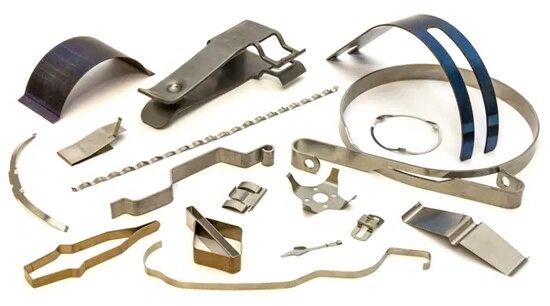
Aplicaciones típicas en distintos sectores
Las piezas estampadas de acero para muelles soportan muchas funciones críticas. Su fuerza, flexibilidad y resistencia a la fatiga son funcionales en entornos de cargas y ciclos elevados. He aquí cómo las utilizan diferentes industrias.
Automotor
Los fabricantes de automóviles utilizan piezas estampadas de acero para muelles para clips, calzos, soportesy anillos de retención. Estas piezas sujetan los paneles, guían el cableado o fijan las piezas embellecedoras. Los sistemas de suspensión utilizan espaciadores de acero para muelles y arandelas para gestionar las cargas.
Las piezas de muelles estampados también se utilizan en bastidores de asientos, columnas de dirección y mecanismos de puertas. Su durabilidad bajo vibraciones y esfuerzos repetidos es clave. La capacidad de producir en serie estas piezas con tolerancias ajustadas mantiene los costes bajos.
Médico
Los dispositivos médicos necesitan componentes pequeños, limpios y precisos. El acero para muelles se utiliza en clips quirúrgicos, herramientas dentales y guías de agujas. Las piezas deben flexionarse sin romperse y recuperar su forma en todo momento.
Grados como el 17-7 PH y el inoxidable 301 son comunes aquí. Ofrecen resistencia a la corrosión y pueden esterilizarse. Un control estricto del acabado superficial y la calidad de los bordes es fundamental para la seguridad.
Aeroespacial
El sector aeroespacial exige piezas ligeras y de alta resistencia que puedan soportar fuerzas extremas. El acero para muelles se utiliza en varillajes de control, cierres, abrazaderas y sistemas de amortiguación de vibraciones.
La capacidad de absorber tensiones sin deformación permanente ayuda en los sistemas de control de vuelo y trenes de aterrizaje. Las piezas deben cumplir estrictas normas de duración a la fatiga y rendimiento a diferentes temperaturas.
Herramientas industriales
En entornos industriales, las piezas estampadas de acero para muelles se utilizan en herramientas manuales, herramientas eléctricas y maquinaria. Algunos ejemplos son los anillos elásticos, los soportes de cuchillas, los retenes y los cierres de seguridad.
Estas piezas soportan impactos repetidos y mantienen su forma. La resistencia del acero para muelles mantiene el desgaste bajo y el rendimiento constante, incluso en condiciones duras en el taller o sobre el terreno.
Soluciones y mejores prácticas
El estampado de acero para muelles puede realizarse sin problemas con la configuración y los hábitos adecuados. Estas secciones ofrecen formas sencillas de reducir los defectos, prolongar la vida útil de las herramientas y mejorar la calidad de la producción.
Ajustes del proceso para reducir los defectos
Utilice el espacio adecuado entre la matriz y el punzón. El acero para muelles necesita más espacio entre el punzón y la matriz que los metales más blandos. Esto mantiene los cortes limpios y reduce el agrietamiento de los bordes.
Aplique una sobredobladura en el utillaje para compensar el springback. Pruebe diferentes ángulos durante la creación de prototipos para encontrar el mejor resultado. No confíe en los ajustes de talla única.
Reduzca ligeramente la velocidad de la prensa si aparecen grietas o arrugas. Un poco más de tiempo durante el conformado ayuda a que el metal fluya sin dañarse.
Ajustar Radio de doblaje. Si se forman grietas en las curvas, aumente el radio interior. El radio de curvatura seguro para el acero para muelles suele ser de 1,5 a 2 veces el espesor.
Consejos sobre lubricación y manipulación de materiales
Elija un lubricante fabricado para acero de alta resistencia. Busque lubricantes con aditivos de extrema presión. Estos reducen la fricción, el calor y el gripado.
Aplique la cantidad justa de lubricante. Demasiado puede causar deslizamiento en el alimentador, y demasiado poco provoca desgaste de la herramienta y estrías en la superficie. Los sistemas de pulverización o los rodillos ofrecen mejor control que la aplicación manual.
Mantenga las bobinas limpias y secas. La suciedad o el óxido provocan una alimentación desigual y pueden dañar las herramientas. Almacene el material en un lugar seco, alejado del suelo y de la humedad.
Utilice enderezadoras y alimentadores adecuados. El acero para muelles tiene mucha memoria y puede querer permanecer curvado. Un sistema de nivelación de sonido lo mantiene plano para un estampado consistente.
Conclusión
El estampado de acero para muelles es una elección acertada para piezas que deben flexionarse, mantener su forma y durar. Permite una producción rápida, una calidad constante y varios diseños. Este proceso desempeña un papel clave en todos los sectores, desde los soportes de los automóviles hasta los clips de las herramientas médicas. Con el material, el utillaje y la configuración adecuados, ofrece resultados resistentes y repetibles a gran escala.
¿Necesita ayuda con piezas estampadas de acero para muelles personalizadas? Trabajamos con distintos grados, tipos de piezas y volúmenes. Tanto si construye prototipos como si aumenta la producción, hablemos de cómo podemos ayudarle en su próximo proyecto.
Hola, soy Kevin Lee

Durante los últimos 10 años, he estado inmerso en diversas formas de fabricación de chapa metálica, compartiendo aquí ideas interesantes de mis experiencias en diversos talleres.
Póngase en contacto

Kevin Lee
Tengo más de diez años de experiencia profesional en la fabricación de chapas metálicas, especializada en corte por láser, plegado, soldadura y técnicas de tratamiento de superficies. Como Director Técnico de Shengen, me comprometo a resolver complejos retos de fabricación y a impulsar la innovación y la calidad en cada proyecto.

